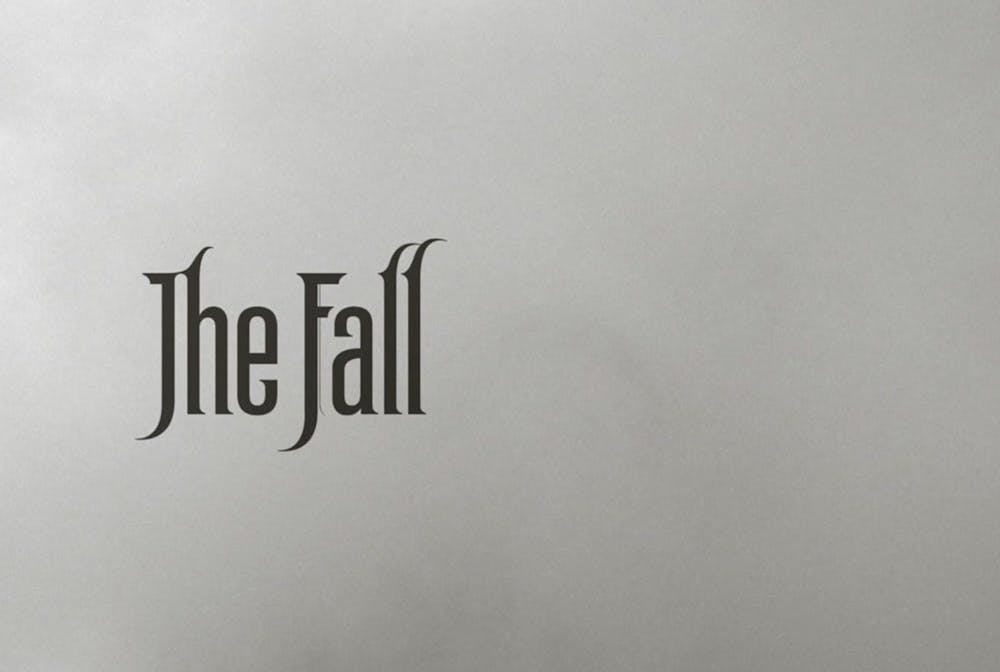On Nov. 8 and 9, Albuquerque’s Guild Cinema screened the new restoration of the 2006 cult favorite “The Fall.”
“The Fall” is set in a hospital in Hollywood in the 1910s. It depicts the unlikely friendship between Roy, a stuntman who was badly injured on a film set, and Alexandria, the child of Romanian immigrants who has a broken arm from harvesting oranges. The majority of the film’s action takes place within a fantastical adventure story that the bored Roy tells to the precocious Alexandria.
The film was directed by Tarsem Singh — known professionally solely by his first name — who gained notoriety in the 1990s as a music video director. He won a Grammy Award in 1991 for directing the enigmatic, lavish video for R.E.M.’s hit song “Losing My Religion.” With his 2000 film “The Cell,” Tarsem pivoted to a career in feature filmmaking.
In the film’s story-within-a-story, five men from around the world band together to get revenge on Governor Odious, a mysterious ruler who has wronged each of the heroes in some way. The story is seen through the endlessly fanciful eyes of Alexandria. She imagines each of the story’s characters to be someone from her life — ranging from family members to hospital workers, with Roy taking the form of the Black Bandit, the group’s leader.
Alexandria’s childlike wonder frequently bursts into the story, causing details to change based on her interpretation of the events or her opinion of how Roy’s story should go. In particular, she becomes fixated on the relationship between the Black Bandit and Evelyn, Governor Odious’ girlfriend who the Black Bandit falls in love with. Alexandria models her character from a nurse in the hospital.
The astounding costumes, set design, cinematography and color palette of “The Fall” are each informed by Alexandria’s whimsical way of looking at the world. The film is a visual feast that is best experienced on the big screen, with Tarsem and his collaborators adorning this fantastical world in sumptuous primary colors.
Costume designer Eiko Ishioka’s work is of particular note; the wardrobes of the film’s heroes are a tastefully rendered blend of styles from all over the world, perfectly accompanying the film’s multicultural influences.
This bright and beautiful aesthetic imbues “The Fall” with the feel of a children’s storybook, but with a morbid streak that specifically recalls the fairy tales of the Brothers Grimm. Roy’s story grows increasingly violent as the conflict escalates, but Alexandria’s able to handle it; it’s evident that she has encountered worse in her short life.
While the new millennium found Tarsem adapting his sensibilities to the big screen, “The Fall” had been in various stages of production for over two decades prior to its 2006 release.
In an interview with MUBI — the film distribution company responsible for the film’s rerelease — the director revealed that he spent 16 years location-scouting across the globe, shot the film in 28 countries, and was forced to spend an extra two years releasing the film independently.
Nevertheless, Tarsem remained undaunted by the immense obstacles that stood in the way of realizing his vision.
In the interview, Tarsem discussed the struggle of filming at India’s Pangong Tso lake, which is located deep in the Himalayas.
Get content from The Daily Lobo delivered to your inbox
“When we went up there, there was nothing. Now, they’ve shot so many Bollywood films there, there are whole campsites up there,” Tarsem told MUBI. “Whole industries got built because the right people saw the film and realized that the reason nobody shoots there was just that it’s difficult to get there. But that was really my brief — I said, ‘Find me impossible situations and we’ll make it work.’”
While the film took a while to find the right audience, “The Fall” has earned its place in cinema history and is an enduring testament to the power of visual storytelling.
Elijah Ritch is a freelance reporter for the Daily Lobo. They can be reached at culture@dailylobo.com or on X @dailylobo






